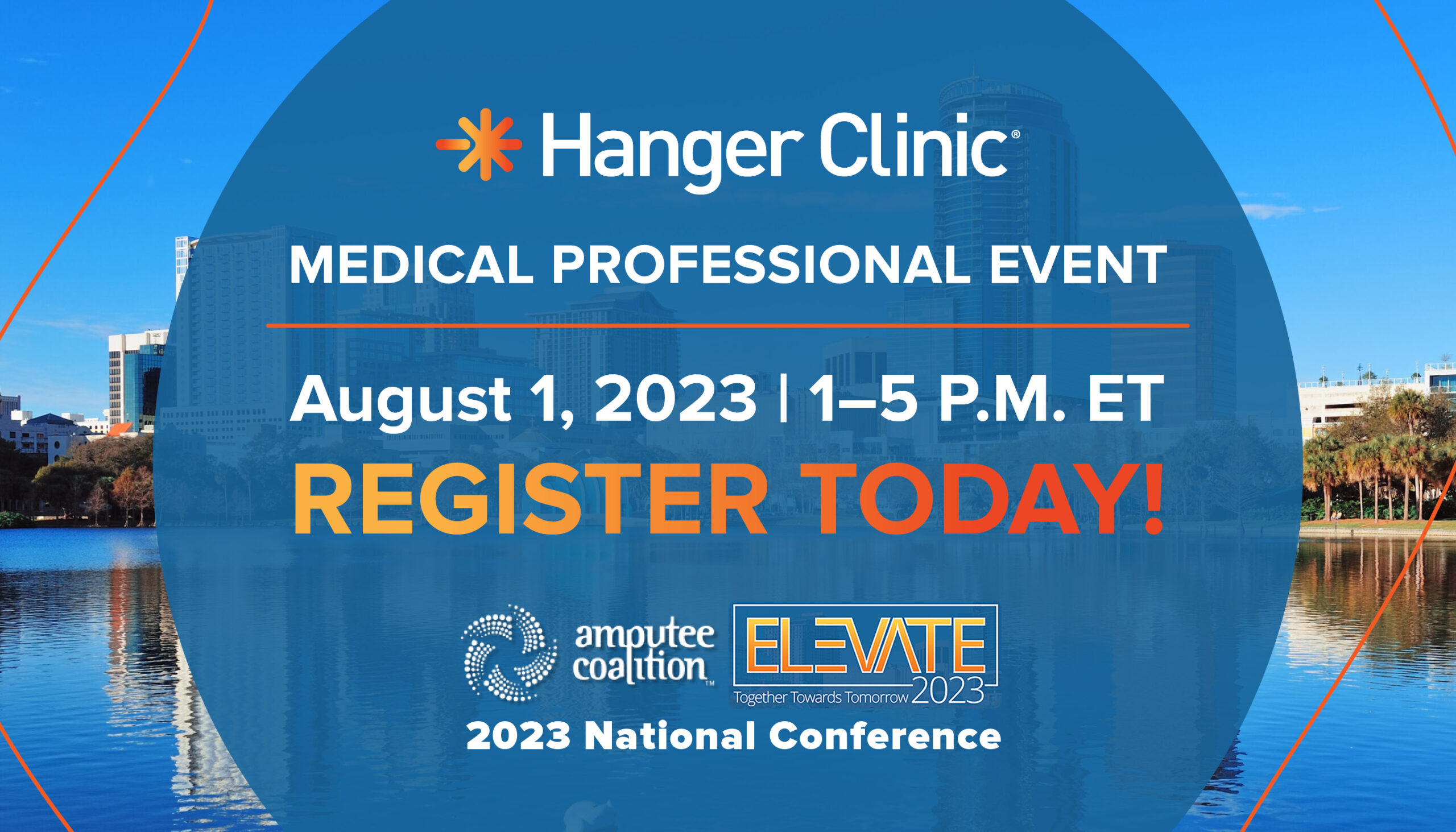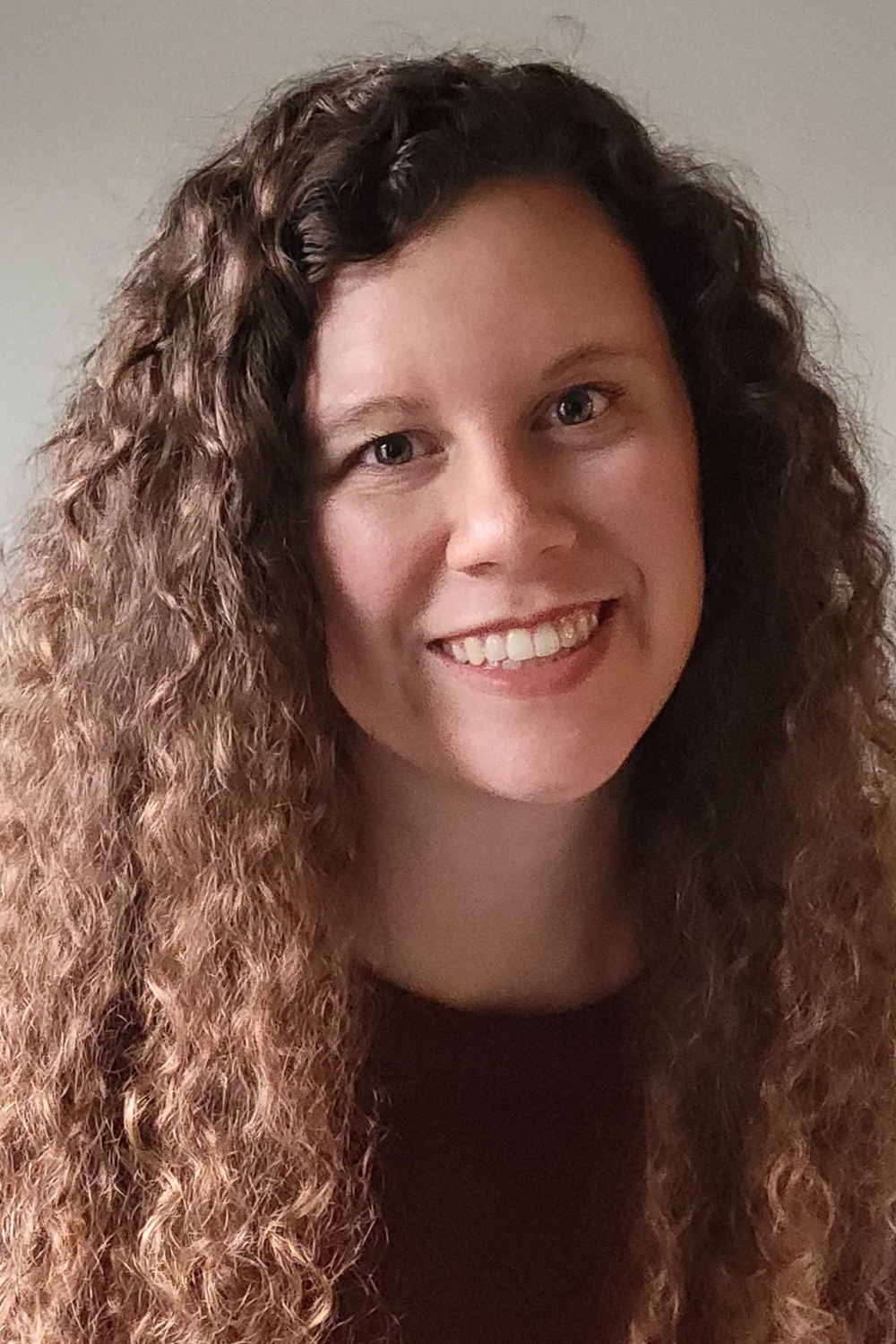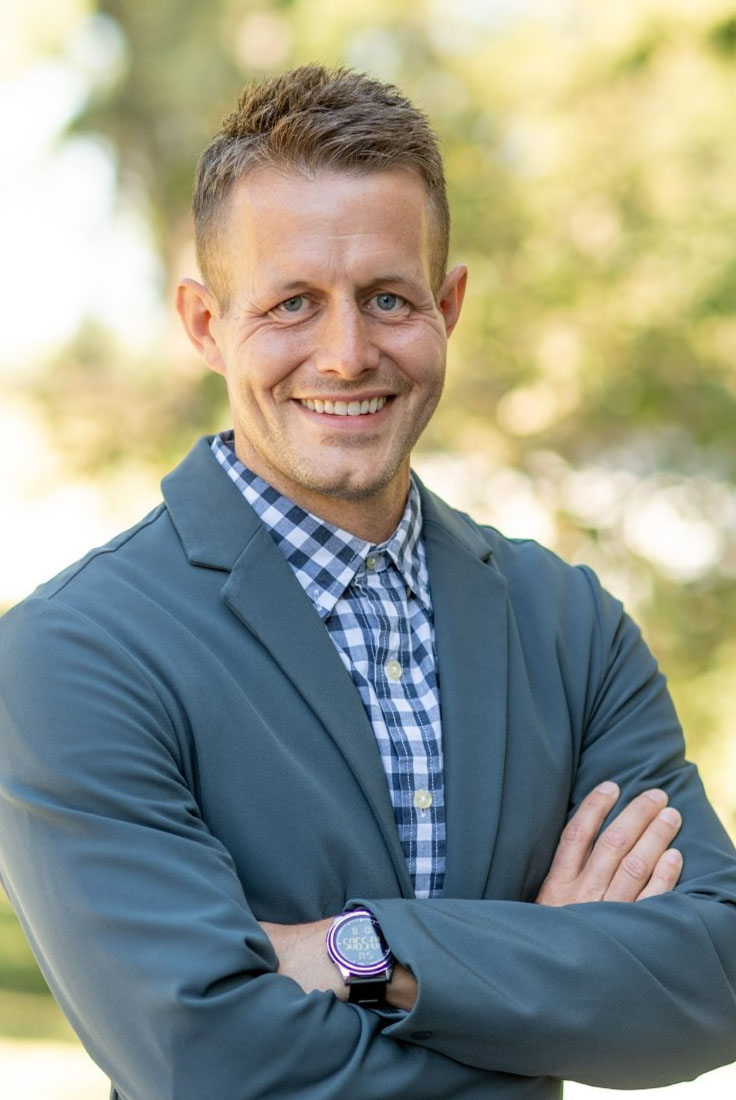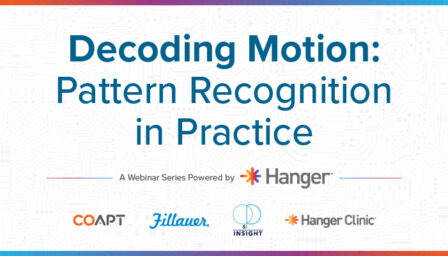Hanger Clinic CE Program at Amputee Coalition Conference 2023

Date and Time
Location
Renaissance Orlando at SeaWorld®
Pathway to Well-Being Following Amputation: Considerations for Upper and Lower Limb Patients
Calling all healthcare professionals attending the Amputee Coalition 2023 conference! Join Hanger Clinic as we take you through the latest research and evidence through presentations, case reviews and panel discussion with top experts in the field of prosthetic rehabilitation.
About the Session:
The absence of one’s limb can highly impact a person’s life. As healthcare providers who care for limb loss patients, we need a clear understanding of the relevant factors influencing general well-being for our patients. In addition to the functional and mobility challenges associated with the absence of the limb, individuals contend with a spectrum of pain experiences and social stigma, and in the case of acquired amputation, a dramatic alteration in self-image and vocation.
Drawing upon recently published evidence from the Hanger Institute and representative case studies, this session will discuss strategies for thoughtful prosthetic design and rehabilitation techniques that address the restoration of meaningful mobility, bimanual function and well-being through individualized approaches to each patient’s care journey.
This course is meant to challenge conventional assumptions related to anticipated prosthetic mobility in patient populations and speak to the impact of component selection in enhancing prosthetic mobility and mitigating fall risk in this population. The impact of comorbid health conditions on prosthetic potential will also be discussed.
Credits:
This course is designed for physical therapists, occupational therapists, nurses, case managers, and other healthcare professionals with mid-advanced level experience in providing care for this patient population. Whether you have just started or are an expert in caring for this patient population, this course will have something for everyone.
3.5 Pre-Approved Continuing Education Credits available for the below professionals:
- PT, PTA
- OT, OTA
- RN
- Case Managers
- O&P Clinicians
Physician (all others) will receive a Certificate of Course Completion to submit to their licensing board. Credits will be available through Hanger Clinic’s Continuing Education Accreditation Program. Learn more.
Cost:
Choose: Hanger Clinic Training Only – Conference Registration Optional
$50 Standard Registration
$25 Student Registration
Session Agenda
| Section I – The Research Shaping Upper Limb Loss Care The value of recently published evidence is largely dependent upon its integration within individual clinics and individual treatment plans. This lecture will first present the most recent and impact studies as it relates to upper limb amputation outcomes. |
| Section II: Restoring Meaningful Bimanual Function among Individuals with Upper Limb Amputation This lecture will discuss the therapy-focused application of the presented publications within multiple practice scenarios and decision making. |
| Section III: Applying Recent Evidence through Case Studies Following the presentations, the presenters and patients, led by Phil Stevens will share a short series of cases in which the principles from the preceding material were applied to individual patient treatment plans. Interactive discussion with the multi-disciplinary panel and the audience will be promoted and encouraged. |
| Networking Break |
| Section I – The Research Shaping Low Limb Loss Care Drawing upon recently published evidence from the Hanger Institute and representative case studies, this session will discuss strategies for thoughtful prosthetic design and rehabilitation techniques that address the restoration of meaningful mobility and well-being through individualized approaches to each patient’s care journey. |
| Section II – Restoring Meaningful Mobility and Stability among Individuals with Lower Limb Amputation In addition to mobility restoration, older individuals with metabolic disease carry and increased risk of injurious falls, as do lower limb prosthesis users. The injurious fall risk among older amputees with metabolic disease is further compounded. Modern prosthetic technologies have been engineered to mitigate this fall risk. The impact of components selection (ie, prosthetic knees and feet) upon the relative injurious fall rates experienced by this population will be discussed. |
| Section III – Applying Recent Evidence through Case Studies Following the presentations, the presenters and patients, will share a short series of cases in which the principles from the preceding material were applied to individual patient treatment plans. Interactive discussion with the multi-disciplinary panel and the audience will be promoted and encouraged. |
Objectives
Upon completion of this program, participants should be able to:
- Compare and contract various principles of individual patient treatment plans and how plans impacted individual patient outcomes
- List the key findings of several recent publications related to prosthetic mobility
- Apply the understanding of modern prosthetic componentry to facilitate optimal prosthetic mobility, bimanual function and mitigate the risk of injurious falls among appropriate prosthetic candidates
Speakers:




Related Events

July 30, 2025
From Code to Care: Expanding Access to Pattern Recognition in Upper Limb Prosthetics
This session provides critical insights into Healthcare Common Procedure Coding System L6700, a newly approved reimbursement code representing the integration of myoelectric pattern recognition within an upper limb prosthesis.

August 27, 2025
Foundations of Pattern Recognition: Principles, Evidence, and Patient Candidacy
This course introduces therapists to emerging care strategies for individuals following upper limb amputation, with a focus on integrating pattern recognition technology into rehabilitation.